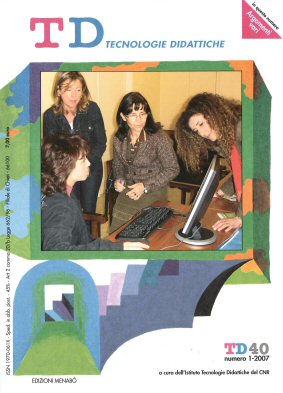A multidimensional approach to the sustainability of e-learning
Main Article Content
Abstract
Article Details
Authors who publish with this journal agree to the following terms:
- Authors retain copyright and grant the journal right of first publication with the work simultaneously licensed under a Creative Commons CC BY 4.0 Attribution 4.0 International License.
- Authors are able to enter into separate, additional contractual arrangements for the non-exclusive distribution of the journal's published version of the work (e.g., post it to an institutional repository or publish it in a book), with an acknowledgement of its initial publication in this journal.
- Authors are permitted and encouraged to post their work online (e.g., in institutional repositories or on their website) prior to and during the submission process, as it can lead to productive exchanges, as well as earlier and greater citation of published work (See The Effect of Open Access)
References
Attwell G. (2005), E-learning and sustainability. EdTechPost : Technology for Learning, Thinking and Collaborating. http://www.ossite.org/Members/ GrahamAttwell/sustainibility/attac h/sustainibility4.doc
Barbian J. (2001), The future training room. Training, 38 (9), 40-45. Bass F.M. (1969), A new product growth model for consumer durables. Management Science, 15, 215-227.
Bates A. (2002), Managing technological change. Jossey-Bass Publishers, San Francisco.
Bloom B.S. (1971), Handbook on formative and summative evaluation of student learning, New York: McGraw-Hill.
Euler D., Wilbers K. (2002), Selbstlernen mit neuen Medien didaktisch gestalten. In D. Euler, C. Metzger (eds), Hochschuldidaktische Schriften, capitolo 1, St.Gallen: Institut für Wirtschaftspädagogik (citazione tratta da Seufert e Euler, 2003).
Hense J., Mandl H., Kruppa K., Gräsel C. (2001), Concept, realisation, and evaluation of SEMIK, Proceedings of WCCE’01, 777-786.
Rogers E.M. (1995), Diffusion of innovations, 4th Edition. New York: Free Press.
Seufert S. (2003), Shaping Innovations: e-learning as a catalyst for a new culture in learning and teaching?, ICNEE 2003. http://www.scil.ch/docs/2003- 05-icnee-seufert-shapinginno vations.pdf
Seufert S., Euler D. (2003), Sustainability of e-learning innovations: findings of expert interviews. http://www.scil.ch/publications/d ocs/2003-06-seufer t - e u l e r - sustainability-elearning.pdf
Trentin G. (1997), Telematics and online teacher training: the Polaris project. International Journal of Computer Assisted Learning, 13(4), 261-270.
Trentin G. (2004), Towards a real sustainability of e-learning. Proceedings of E-learning & sustainability, Fondazione ENI Enrico Mattei, Giune 2004. http://www.altrascuola.it/article.p hp?sid=951.
Trentin G. (2005), From ‘formal’ to ‘informal’ e-Learning through knowledge management and sharing. Journal of e-Learning and Knowledge Society 1(2), 209-217.
Wiliam D., Black P. (1996), Meanings and consequences: a basis for distinguishing formative and summative functions of assessment? British Educational Research Journal 22(5), 537-548.

